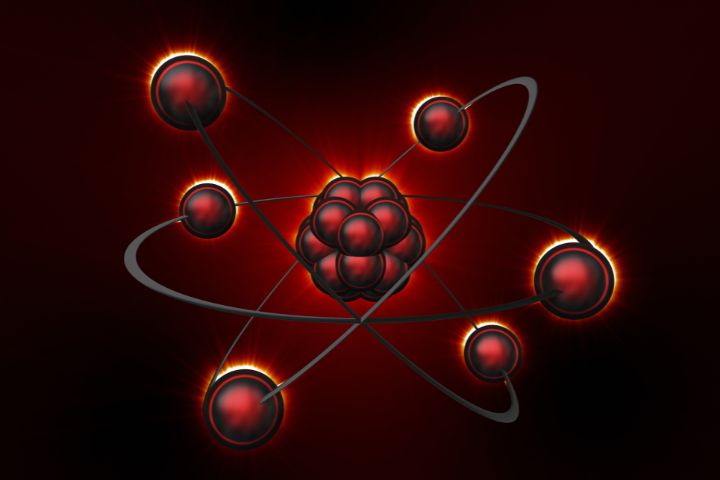Nuclear physics, discover what it is and what it studies this branch of modern physics

What is nuclear physics
Today we will talk about
Nuclear physics is the branch of physics that investigates the processes that take place in atomic nuclei . It studies the properties, the interactions between them and the applications it can have in different fields of science such as technology or biology.
Nuclear physics is used in nuclear power plants around the world to generate energy and supply huge cities with electricity. Phenomena derived from nuclear physics such as radioactivity can also be used in biology to track the molecules inside the organism and better understand how our metabolism works.
What does nuclear physics study?
Modern nuclear physics delves into numerous areas and aspects of the atomic nucleus and its interactions. Some of the key areas and topics include:
- Structure of the atomic nucleus
- strong nuclear force
- Disintegration and radioactivity
- Nuclear reactions
- Nuclear models
- Nuclear fission and fusion
- Interaction with neutrinos
- Properties of nucleons
- Isotopes and their classification
- Production and use of X-rays
- Subatomic particles, such as mesons and baryons
- Applications in medicine and technology
History of nuclear physics
The first investigations into the properties of nuclei were carried out by Henri Becquerel, Marie Curie and Pierre Curie. with the study of radioactivity present in nature.
A few years later Niels Bohr proposed the atomic model in which he described how atoms were made up of a nucleus composed of neutrons and protons and several outer layers of negatively charged particles called electrons.
In the 30s of the last century Irène Juliot-Curie and Jean Frédéric Joliot-Curie discovered artificial radioactivity bombarding boron and aluminum with alpha particles to generate unstable nitrogen and phosphorus atoms.
Nuclear physics was finally defined with the discovery of nuclear fission by German scientists Otto Hahn and Fritz Strassmann, used in nuclear power plants for power generation and in nuclear weapons during wars.
Nuclear decay and radioactivity
Radioactivity is the loss of energy from an unstable atomic nucleus. This energy can be a particle or electromagnetic radiation. We can divide the types of radiation into alpha radiation, beta radiation and gamma radiation.
alpha radiation
Alpha particles are helium cores which are made up of two protons and two neutrons. The penetration capacity of this type of radiation is small.
beta radiation
There are two types of particles in beta radiation. The particles that are released can be both electrons and positrons. The emission of electrons comes from the decay of the neutron from an unstable atomic nucleus to a proton, an electron, and an antineutrino.
The other type is positron decay where a proton turns into a neutron, positron and neutrino.
Beta particles are more penetrating than alpha particles, but not as penetrating as gamma radiation.
Gamma radiation
Gamma radiation, unlike the previous two, does not emit fermionic particles but rather electromagnetic radiation (photons).
It is the most penetrating of the 3 and is capable of reaching the nucleus of the cells, affecting their genetic material and proteins.
Gamma particles are capable of ionizing matter by interacting with it through processes such as the photoelectric effect or the Compton effect.
Nuclear fission

Nuclear fission is the part of nuclear physics that studies the division of an atomic nucleus into byproducts.
From this fission, alpha or gamma radiation is released in addition to an enormous amount of energy.
This nuclear process can be induced by several methods. A particle, usually a proton, is collided with the appropriate energy so that another atomic nucleus becomes unstable.
This new unstable nucleus fragments and releases other neutrons that will in turn destabilize more atomic nuclei.
This is a chain process and is the basis for obtaining energy in nuclear power plants and the great energy released by atomic bombs.
nuclear fusion

Nuclear fusion is the process by which several atomic nuclei join together to form a new atomic nucleus.
This fusion releases high amounts of energy. To reach this point, a lot of energy is needed to overcome the electromagnetic repulsion between protons and be able to bring them together at a sufficient distance for the strong nuclear interaction to begin to act.
Nuclear fusion takes place inside stars like the sun where hydrogen fuses to generate helium. This happens thanks to the high temperatures reached inside the stars.
These types of reactions are called thermonuclear reactions.
weak nuclear force
All the phenomena that occur in nuclear physics are due to the two forces that act within the nucleus of the atom: the weak nuclear interaction and the strong nuclear interaction.
The weak nuclear force is responsible for phenomena such as radioactive decay occurring. In quantum field theory, this force that causes nuclear decay is a consequence of the exchange of W and Z bosons.
strong nuclear force
The strong nuclear force or strong interaction is what keeps neutrons and protons tightly bound in the nucleus of the atom.
It has to be strong enough to overcome the repulsion generated by the charges of the protons.
According to quantum field theory, this interaction takes place thanks to the exchange of bosons called gluons.
The Lagrangian that describes the gluon field is a gauge field with an internal SU(3) symmetry. As Noether's principle says, symmetries have a conserved magnitude associated with them and in this case this magnitude is called color charge.
Each quark has a different color charge (red, blue or green). When they join to form a proton or neutron, the color resulting from the union must always be white (conserved and invariant magnitude).

